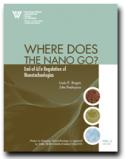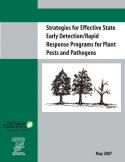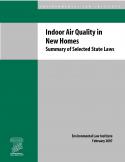
Research Reports
ELI publishes Research Reports available for free download that present the analysis and conclusions of the policy studies ELI undertakes to improve environmental law and policy. These reports contribute to education of the profession and disseminate diverse points of view and opinions to stimulate a robust and creative exchange of ideas. Those publications, which express opinions of the authors and not necessarily those of the Institute, its Board of Directors, or funding organizations, exemplify ELI’s commitment to dialogue with all sectors.
Recent Supreme Court rulings have called into question federal Clean Water Act coverage for certain wetlands and streams. Legislation recently introduced in the House of Representatives would amend the Act to restate and clarify Congress’s intent to regulate the waters of the United States to the fullest extent of its legislative power. The Environmental Law Institute has issued a new white paper that identifies which constitutional powers Congress can rely on to protect the Nation’s waters, and explains in straightforward language what the Supreme Court has said about these powers.
Read More >
The Environmental Protection Agency (EPA) must make key decisions about how to apply the two major end-of-life statutes to nanotechnology waste in order to ensure adequate oversight for these technologies, concludes a new report from the Wilson Center's Project on Emerging Nanotechnologies. However, the report notes that the Agency lacks much of the data on human health and eco-toxicity that form the basis for such determinations, creating some tough challenges ahead in EPA?s decision-making process.
Read More >
Strategies for Effective State Early Detection/Rapid Response Programs for Plant Pests and Pathogens
Early Detection/Rapid Response (EDRR) is a critical tool for identifying and eradicating introductions of new invasive species and pests. The effectiveness of EDRR largely depends on a supportive legal framework that can facilitate quick action. However, a number of states either lack the appropriate legal framework or contain restrictions (such as on the use of pesticides, or the area/manner in which they can be applied, etc.) that hinder the effective use of EDRR. It is important to understand where these gaps in state authority lie in order to address them at the legal and policy level.
Read More >
This report describes state laws and regulations that address several key issues relating to indoor air quality in new home construction. Its purpose is to increase understanding of ways in which states have adopted legal requirements for improving indoor air quality that go beyond typical residential building code measures.
Read More >